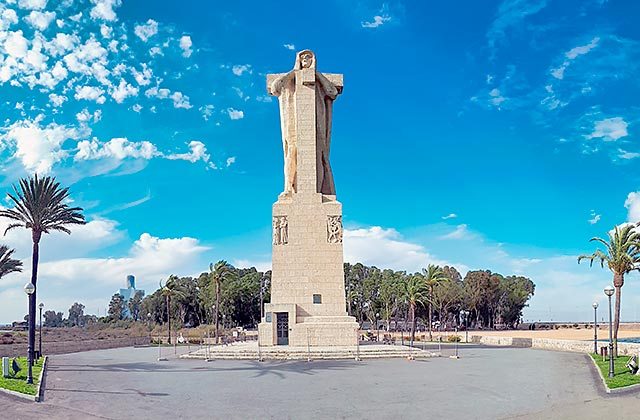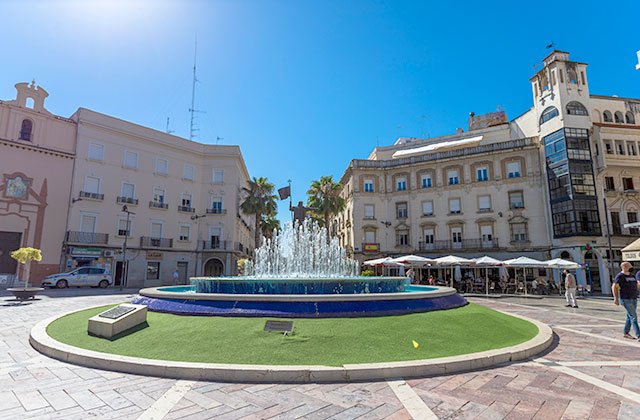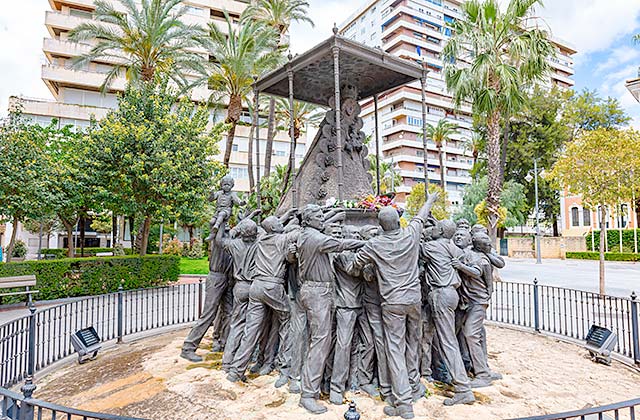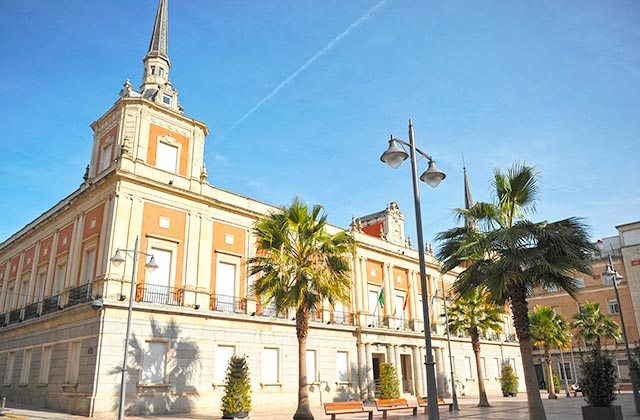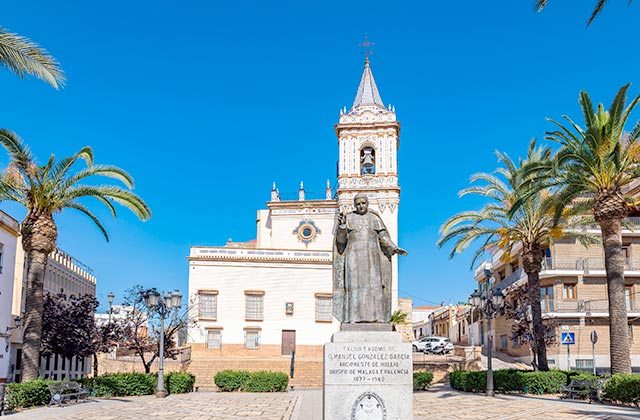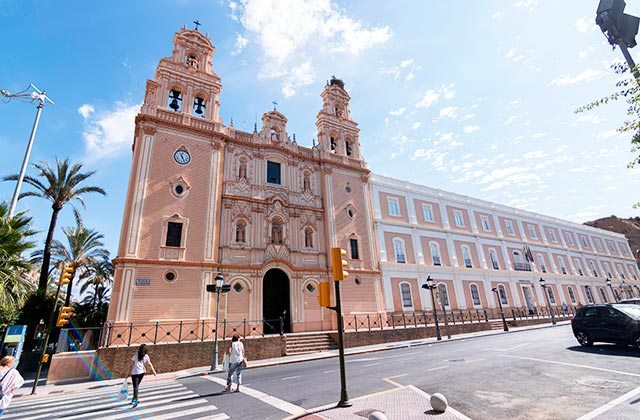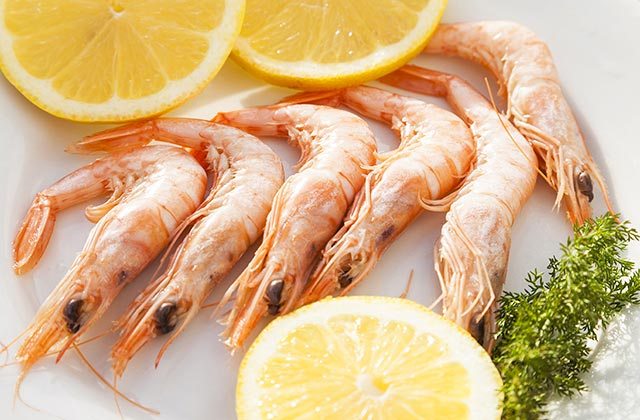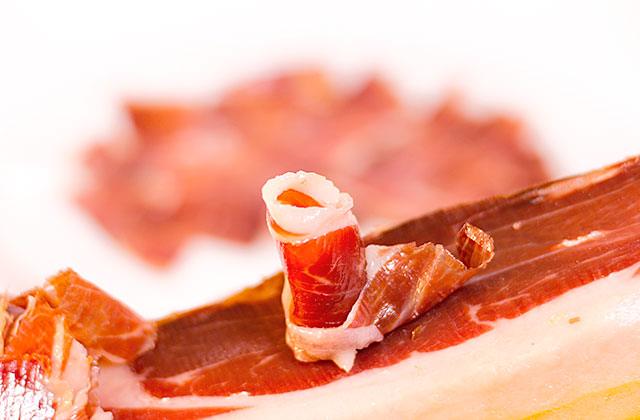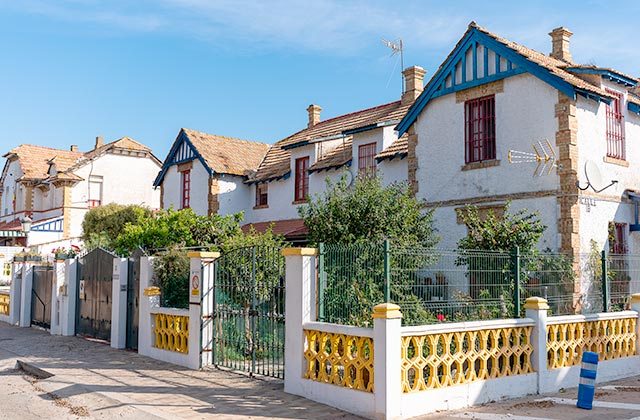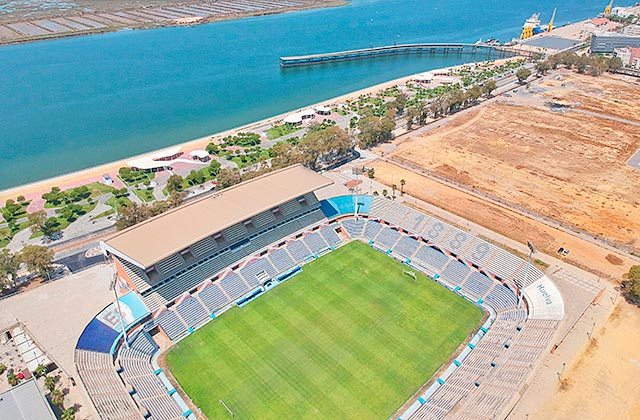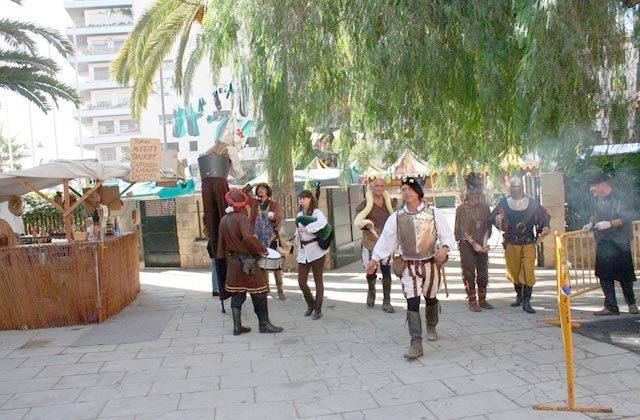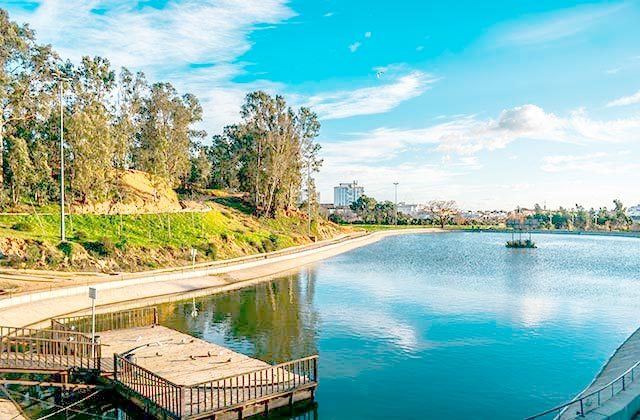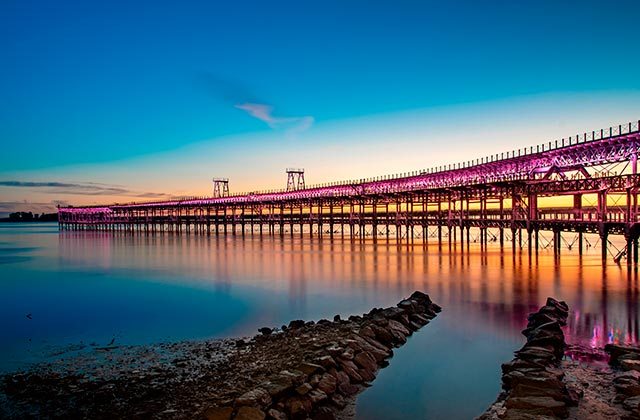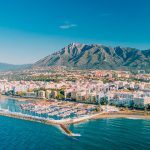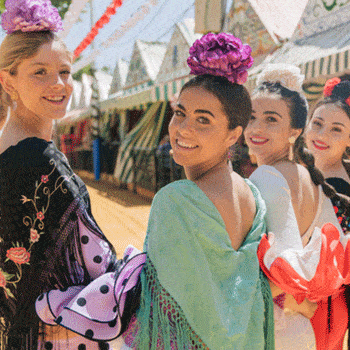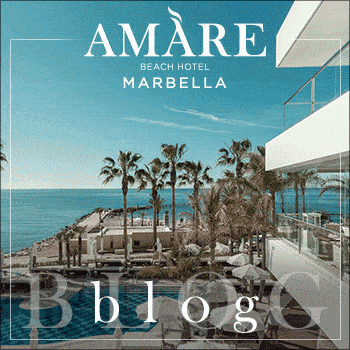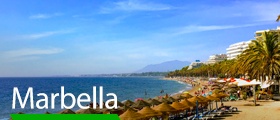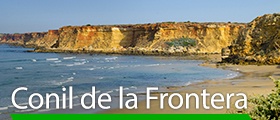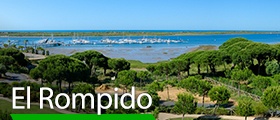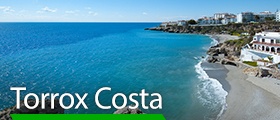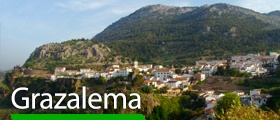
Huelva Day Trip: a day visiting the door to the Atlantic
The confluence of the rivers Tinto and Odiel is the place where the city of Huelva is located, capital of the province of the same name and a reference to different cultures and civilizations, some of which predate even the Tartessus. The city is linked to the discovery of the American continent, a fact that has marked the city and the province, which feature countless spaces that tell the story of the beginnings of that massive adventure, establishing very important connections to Ibero-American entities.
Considering all of this, we do not want you to miss anything; hence, we have come up with a spectacular “Huelva day trip” for you to experience everything the jewel of Andalusia has to offer. Pay attention not to miss any detail because we will present you everything you must see in Huelva. Let us get started:
The best idea is to wake up early to quietly have breakfast in the hotel and get into the car bursting with energy. The best hour to arrive at the destination is at 9:00 a.m. Once there, all of your senses will get sharp so enjoy everything Huelva has to offer.
9:00 Walking down the historic center
We start our tour in the historic center of the city, known today, and since 1936, as Plaza de las Monjas (Nuns’ Square), a place that has had many names in the past, such as “Plaza de Abajo” or “Plaza Nueva”. Built in the grounds next to the Convento de la Agustinas (Augustinian Convent), it is nowadays one of the most picturesque spaces in the capital city. The square features a Christopher Columbus statue placed there in 2011, a landmark of the city that points to the ocean. The most representative buildings include the old Bank of Spain building, the beautiful Palace of the Dukes of Medina de Sidonia, the sumptuous building known as the Casa del Millón (Million House), and the Hotel París building, home of a secondary office of the Provincial Government of Huelva.
From the square, tourists can take the Martín Alonso Pinzón Avenue, a beautiful pedestrian street where the City Hall of Huelva is located, specifically in the Plaza de la Constitución (Constitution Square). At the end of the avenue, there is the Virgen del Rocio (Virgin of El Rocio) monument, a very important image for the province, worshiped in the El Rocio chapel in Almonte. Also, next to the gardens and the Fuente de los Tritones (Fountain of the Tritons), tourists can find the Casa de Colón (House of Columbus), used as Exhibition and Congress Palace, as well as serving as home of the Huelva Ibero-American Film Festival.
The center of Huelva is a fabulous place to go on walks, most of its streets are for pedestrians, cars give right of passage to people and, for that reason, the city has a very active commercial activity, it is filled with stores, restaurants and other services among beautiful buildings, some of them reminiscent of Portugal, with their classic tiles. Besides walking along the Plaza de las Monjas and the Martín Alonso Pinzón Avenue, commonly known as the Gran Vía (Main Street) of Huelva, there are other streets worth visiting, such as Calle Concepción, known as the “calle de las tiendas” (Store Street), and Calle Jesús Nazareno, the latter is specially colorful during Easter.
Other places and squares tourists are encouraged to visit include the Niña Square, where the Centro Edimburgo is located, home of the English Studies Center; the modern Del Carmen market; and in the Plaza Alcalde Coto Mora we can find the Gran Teatro (Great Theater) de Huelva, work of Pedro Sánchez y Nuñez, and right across from it the Palacio de las Conchas, home of the Information and Tourism Office of the Regional Government of Andalusia, both buildings feature a neoclassical style and are easily accessible from the south end of the Plaza de las Monjas. A little farther south, there is the Train Station building, which would be interesting to visit. If what we want is to find a cultural place to know more about the past and the present of the city, the Museo Provincial de Huelva (Huelva Provincial Museum) is the perfect choice, the place features a well-preserved archaeology section.
11:00 Religious Patrimony of Huelva
Among the numerous religious patrimonies in Huelva, the following are the most renowned: The Iglesia de San Pedro (Saint Peter’s Church), of Mudejar style and built over an ancient mosque. During a recent visit, we were able to experience the fabulous attention of the locals to the visitors. At the entrance, after being kindly welcomed, the church’s priest offered to give us a guided tour through this building that was declared National Cultural Interest Asset in 1999, all of this selflessly, something we truly appreciated because it helped us understand the history of this beautiful catholic temple that also features processional sculptures, mainly from the artist León Ortega. In my opinion, a must-visit place. Close to the church there is the Ermita de la Soledad (Chapel of the Solitude), built around the 15th-16th century, home of the Hermandad del Santo Entierro (Brotherhood of the Holy Sepulcher), with a pristine white look in its facade, linked closely to the history of Huelva.
Let us not forget that we are in a city of cathedrals and that is why visiting the Catedral de la Merced (Cathedral of the Mercy) is a must. The cathedral is located next to a square of the same name and the Bull Ring. It is a building of renaissance facade built at the beginning of the 17th century and declared cathedral in the middle of last century. The cathedral is home to the image of the Virgen de la Cinta (Virgin of the Ribbon), the city’s patron saint, a sculpture from the artist Martínez Montañés.
Other religious buildings of interest include the Santuario de la Cinta (Sanctuary of the Ribbon) of the 15th century and gothic-Mudejar style, the Iglesia de la Concepción (Church of the Conception), considered the first Spanish temple dedicated to the Immaculate Conception, and lastly the Humilladero de la Cinta (Shrine of the Ribbon), the oldest construction of the city, built around the 14th century.
14:00 Lunch Time!
In this visit to Huelva, we will pass by a number of places and, among other things, the good cuisine will be one of the main attractions. Huelva can brag about having in its menu the best from sea and land products thanks to its privileged location between the Atlantic coast and its agriculturally rich inner regions, which added to the influences of all the cultures that have passed through there during the centuries, have given birth to a high quality and elaborated cuisine that is nowadays specialized to be in tune with the most innovative tendencies.
Therefore, we can offer you a selection of options that are mind-blowing delicious.
Bar Azabache
The pleasure of going out for tapas reaches its highest levels in places such as Azabache. A place that has accomplished its fame thanks to the quality of their products. In a classic tavern environment, visitors can taste miniature delicacies such as mini fish tacos, cuttlefish eggs and a variety of scrambled eggs and meats. It is highly recommended to ask for the “special of the day” which consists on classic stews from Huelva such as hake and prawn meatballs or cuttlefish in sauce. The wine variety ranges from Vintage to Gran Reserva.
Calle Vázquez López, 22, 21001 Huelva
Tel: +34 959 257 528
Taberna El condado
Ham lovers must pay a visit to the Taberna El condado. Located at the center of the city, close to City Hall, this tapas bar allows you to taste servings of grilled peppers, various kinds of meats and of course the quintessential pork product. Its rustic decorations reminiscent of Sevillanas and Flamenco provides a contrast to the particular figure of the ham shaped beer dispensers.
C. Sor Angela de la Cruz, 3, 21003 Huelva
Tel: +34 959 261 123
Restaurante “La Fonda de María Mandao”
Calle Vázquez López, 11, 21001 Huelva
Tel: +34 673 017 391
Bar Restaurante Juan José
C. Villa Mundaka, 1, 21004 Huelva
Tel: +34 959 263 857
Restaurante “La Teja”
C. Arcipreste Manuel González García, 9, 21003 Huelva
Tel: +34 959 611 096
Kalaka Vinos y Tapas
Av. Martín Alonso Pinzón, 20, 21003 Huelva
Tel: +34 959 821 308
16:00 English District
To settle your stomach you could take a walk down one of the most picturesque neighborhoods of the capital, the one known as Barrio Reina Victoria (Queen Victoria District) or Barrio Obrero (Labor District), located in the Cerro San Cristóbal (Saint Cristopher Hill). This single-family dwelling neighborhood was built in 1916 to honor Queen Victoria I of the United Kingdom, featuring a prominently English style, testimony of the mining activity carried out by Río Tinto Company in the area.
The Government of Andalusia declared this well preserved district a National Cultural Interest Asset, which shows the importance the capital once had thanks to an economy based on the mining industry, with that classic model of garden city that was imported to Spain from England to shelter the bourgeoisie. Each of the houses has a similar style but all of them have differentiators, one of the most curious details of the city. It is definitely worth visiting.
18:00 Visit the Dean of Spanish football
Football and Huelva have been hand in hand since 1889, when the Real Club Recreativo de Huelva, the oldest football team of the Iberian Peninsula with uninterrupted activities was established, which is why it is referred to as the Decano (the Dean). In spite of it currently being in the Second Division, it has been in the First Division in 5 occasions, that and its associates keep it as one of the historical teams of La Liga.
Although since 2007 the mythical Estadio Municipal Colombino (Colombino Municipal Stadium) ceased to exist, today we can visit in the Avenida del Decano (Dean’s Avenue) in the riverside of the Odiel, the Nuevo Colombino, a modern stadium with the capacity to hold more than 20.000 spectators that was inaugurated with a match between the national teams of Spain and Mexico. Football started being played in Huelva in the late 19th century. It was first played by people from Anglo-Saxon origins, but later it became popular in the rest of the provinces of the Iberian Peninsula, an important fact that has marked the city, as much as the discovery of American continent.
19:30 Colombino Market
The province of Huelva is linked to the discovery of the American continent because it is the place where Christopher Columbus planned his journey. To commemorate the discovery, each year a Mercado Colombino (Colombino Market) takes place in the Plaza del Punto square and in the spaces around the Casa Colón. The date matches the holiday of the Día de la Hispanidad (Hispanic Day) (weekend of October 12th).
The market features 70 stands offering Ibero-American handicrafts and food products brought from the “New World”. In addition, the market features characters from those times, artisans working on their shops, falconry exhibitions, customs and weapons from the 15th century, etc.
It also offers shows with fanfares, juggling, romance and legend recitals, musicians, parades, carnival figures with oversized heads… and at certain hours, a theater company represents several historical events, such as the missionary friars preaching the Gospel, or the sailors coming back showing the products brought back from the West Indies (cocoa, potatoes, peppers, tomatoes…).
Children also have a space on the Colombino Market: there is a galleon from those times, an ecological merry-go-round and various educational games.
21:00 Parks and gardens of Huelva
In Huelva there are several parks and gardens worth visiting, such as the one in Avenida de Andalucía, with an area of more than 2 Km. The parque de Zafra (Zafra’s Park), with and important collection of sculptures from national artist, home of the famous Cocheras del Puerto, which are exhibition rooms where the effects of the industrial revolution and the mining industry exploitation in Huelva are explained; the Parque Alonso Sánchez, at the top of a small hill from where the city can be visited, as well as the Parque Moret, the city’s oldest, renovated on the first decade of the current century, it is also the city’s largest and features bicycle lanes, a prominent artificial lake and barbecue facilities.
Curiosities about the city of Huelva
- Discovery of America: Huelva was the starting point of Christopher Columbus’s journey to America in 1492.
- Monument to the Fe Descubridora: The city is home to the Monument to the Fe Descubridora, which represents Columbus and marks the beginning of the Columbus Route.
- Fiestas de la Cinta: Huelva celebrates the Fiestas de la Cinta in honor of its patron, the Virgin of La Cinta.
- Doñana National Park: Part of the Doñana National Park is located in the province of Huelva, a natural reserve with a great diversity of species.
- Wines of the Condado de Huelva: The province is known for its quality wines, especially those from the Condado de Huelva region.
- La Rábida and the Monastery of Santa María de la Rábida: Outside the city, you can find the Monastery of Santa María de la Rábida, which provided support to Columbus during his expedition.
- Chemical industry: Huelva is home to an important chemical industrial complex known as the Huelva Chemical Hub.
- Marismas del Odiel: The Marismas del Odiel, located at the mouth of the Odiel River, are a protected natural area and a bird sanctuary.
In conclusion, whether as a consequence of natural calamities or the action of men, nowadays we find a city that probably could have been richer and more interesting regarding its tourist attractions and its landscapes, however, one thing is certain, the capital of Huelva is surrounded by natural spaces and a patrimony that are exceptional in Spain. Specifically, the city features today some assets of great beauty, landmarks that, after all, have slowly but surely recovered the city’s long lost charm.
Route of the white prawn of Huelva
The Iberian Cured Ham Route in Huelva
Huelva: 15 beautiful villages with a special charm
Where to stay
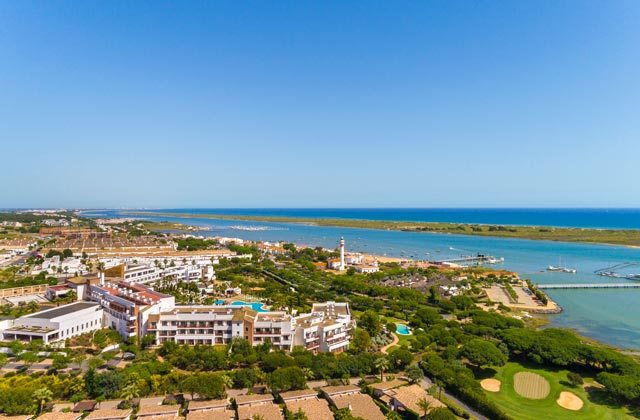
Hotel Fuerte El Rompido
In order to enjoy what Huelva has to offer, it is best to trust the hotels from Fuerte Hoteles, for that reason, we recommend you to stay at Hotel Fuerte El Rompido, which has a privileged location dominating the natural landscape of the river called Río Piedras. Its location is a perfect venue to its architecture or Andalusian roots which blends perfectly with the surrounding environment. Guests can enjoy a virgin beach just 14 km away, and there is also the Sierra de Huelva where they can go on hikes to stay in shape while enjoying nature.
